Desirée Hammen
Intuitive couture embroidery

by Matilde Angelucci
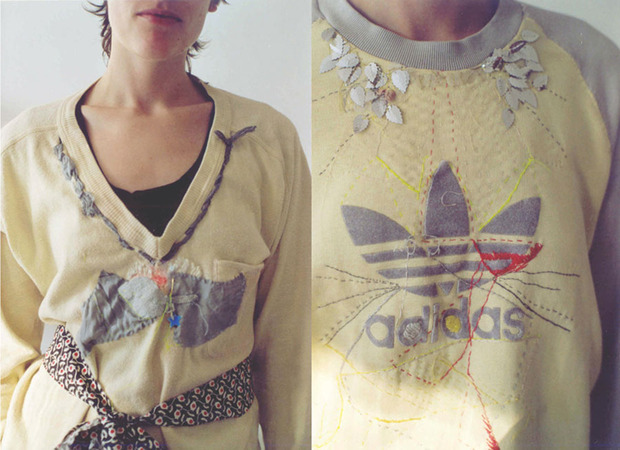
Desirée Hammen is a Dutch artist specializing in haute couture embroidery. In all her work she pursues the beauty of imperfection, creating unusual mash-ups for a truly surreal effect. As a fashion designer, Hammen combines traditional techniques with a DIY spirit to overcome any codified style, her handmade embroidered cardigans translating more as wearable art—totally unique art pieces that seem to transcend the “rules” of trends. According to Hammen, her clothing offers a way to express one’s identity and, she says, “is about a person as human being and his or her story—it’s about distinguishing yourself, showing your unique poetry.” In her mind, fashion should reflect a personal and unique vision of life, which can come from any aspect of one’s outlook. “The garments that I make have been described as punk, meaning that they emit a do-it-yourself mentality,” she says, suggesting the idea that the highest degree of originality doesn’t reside in the unconventional by itself, but instead in one’s creative autonomy. We talked to the designer to learn more about her look and the genesis behind the line.
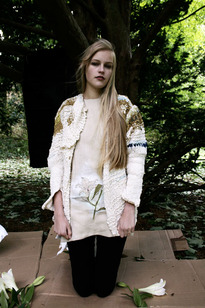
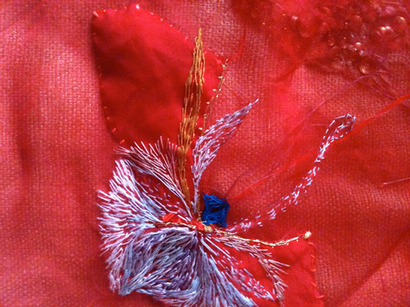
Where do you find inspiration?
My inspiration comes from many sources. Where the inspiration comes from depends on the work. Living with an open mind makes it easy to find beauty and inspiration in different ways. Curiosity is something that can drive me to sew things, the curiosity of “how will this item or body of work look when I use this stitch over and over again?” Or, “how I can improve a stitch and make a new one out of it?” Curiosity and asking myself questions in a broad sense, or contrastingly, in a very focused way, develops my work.
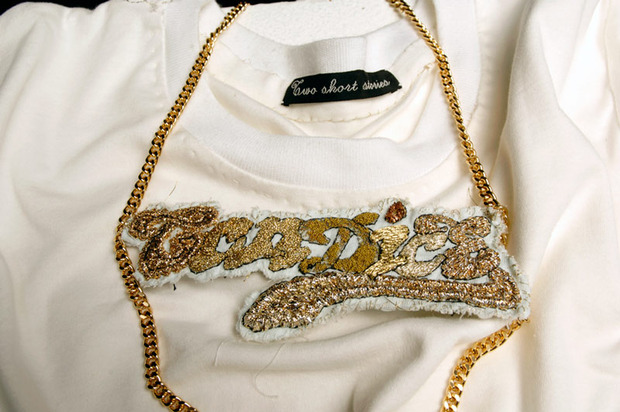
You make clothes on request based on customer desires, how does the entire process work?
It’s based on a conversation between people. It is about making a connection for a certain period of time, in which I look for little things that interest me within one’s personality. When I work on the garment, I concentrate on the person I make it for so that the garment will be a piece that contains influences of the person. It’s a really nice way to work and it takes a lot of focus. The process is intuitive but grounded within reality. Of course, I discuss colors or materials and I make a small sample to show what ideas or direction I’m considering. Besides that, I keep in mind for what use the garment will be. The ultimate goal in this is to push the style a little bit in a daring way and give beauty to the person. My intuition leads me to ideas when I think about that person or something that they wish for.

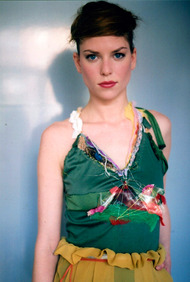
How would you define the beauty of imperfection?
Imperfection is an interesting issue. It creates a tension in the work. And of course it is a very human thing. No one is perfect. It’s about the way I watch and how I can experience beauty in something imperfect. Imperfection for me is very inspiring because it triggers me everytime to develop my work into new directions. We should not abolish imperfection but embrace it as a unique aspect of each person and each body of work. This way, I create a new beauty which I find more interesting than the beauty of perfection. To put “imperfection” next to “perfection” is a new way of working that I explore since I specialize in haute couture embroidery.
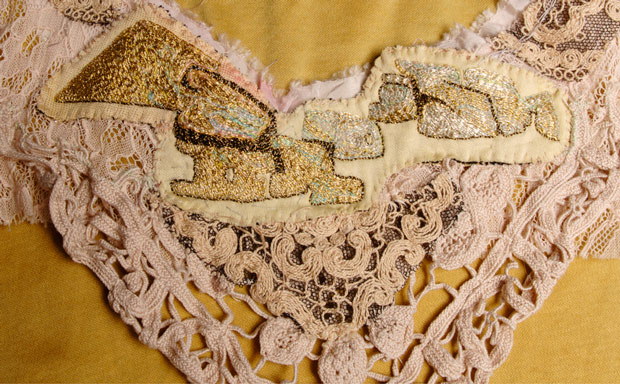
Can you give an example of that?
When making my cardigans, I don’t work with a pattern but start to knit by hand on a intuitive level. This makes every piece unique. I have an idea in mind about the silhouette and the colors and I keep the body and the person in mind, and that guides me to a certain way of working. Parts of the garment are grown in an organic way, and so parts will have differences in lengths and outcome. For me, this makes the work interesting, giving myself freedom but keeping it all together at the end. How the different parts level together at the end for me is like reading a book with different personalities, structures and layers. Another example is when I make jewelry it often contains found objects from the streets. Those objects are lost, used and often crushed. They have already had a life and thus a certain history. To combine this with new objects and treasures gives them a certain “electricity” that I love and that makes my heart jump. A few years ago I began to take walks through my living environment. I took the same route and started to see more and more interesting details. I found great inspiration from homeless shelters, from which I make my own story of a world that stands on its own but is typically not seen as a positive part of society, or as a perfect part of life.
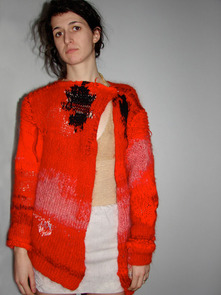

As an artist you achieve the same surreal effect transforming everyday reality in a new sensorial experience. Can we say that deconstruction is the aim of your work?
It might be, but I wouldn’t say that. If you think about deconstruction, it’s about breaking down existing structures. And when we look around and see our surroundings—or things we use like clothing—we have a certain way of judging them, whether it be positively or negatively. To see structures in a different perspective is certainly an aim of my work. Since the way we think about structures is universal, it’s nice to recognize that a different, alternative way of conceptualizing them also exists. But changing that thought pattern is both challenging and difficult, even for me.
Select items are available for purchase through Hammen’s website.












